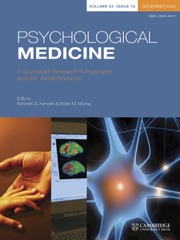Article contents
How should we understand the absence of sex differences in the genetic and environmental origins of antisocial behavior?
Published online by Cambridge University Press: 08 April 2019
Abstract
Available twin-family data on sex differences in antisocial behavior (ASB) simultaneously suggest that ASB is far more prevalent in males than in females, and that its etiology (i.e. the effects of genes, environments, hormones, culture) does not differ across sex. This duality presents a conundrum: How do we make sense of mean sex differences in ASB if not via differences in genes, environments, hormones, and/or cultures? The current selective review and critique explores possible contributions to these seemingly incompatible sets of findings. We asked whether the presence of sex differences in behavior could be smaller than is typically assumed, or confined to a specific set of behaviors. We also asked whether there might be undetected differences in etiology across sex in twin-family studies. We found little evidence that bias or measurement invariance across sex account for phenotypic sex differences in ASB, but we did identify some key limitations to current twin-family approaches. These included the questionable ability of qualitative sex difference analyses to detect gender norms and prenatal exposure to testosterone, and concerns regarding specific analytic components of quantitative sex difference analyses. We conclude that the male preponderance in ASB is likely to reflect a true sex difference in observed behavior. It was less clear, however, that the genetic and environmental contributions to ASB are indeed identical across sex, as argued by prior twin-family studies. It is our hope that this review will inspire the development of new, genetically-informed methods for studying sex differences in etiology.
- Type
- Invited Review
- Information
- Copyright
- Copyright © Cambridge University Press 2019
References
- 6
- Cited by




